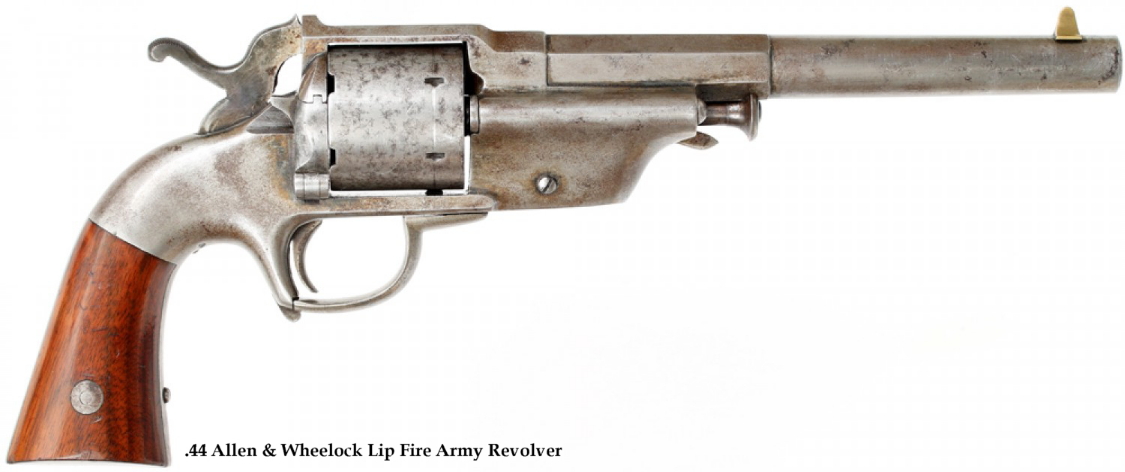Ethan Allen started his company in 1831 in Milford, MA as a cutlery maker. The company went through various changes over the years with family members joining the company and migrated more and more to firearm manufacturing for the civilian market. After moving to Worchester, MA in 1847, Thomas Wheelock joined the company in 1854 and the company became known later as Allen & Wheelock. After Wheelock’s death the company was renamed to E. Allen & Co and in 1865 two of his sons-in-law, Sullivan Forehand and Henry Wadsworth also joined the company. After Allen’s death in 1871, the 34-year-old company would change names again, this time to Forehand & Wadsworth. This was the period where the percussion revolver changed to the self-contained cartridge, with Smith & Wesson being the market leader with their 22 and 32 cal. rimfires but more importantly the Rollin White patent they held. Allen on the other hand offered his line of cartridges in the 36 and 44 cal handguns and his lip-fire cartridges were a revolutionary design for its time.
Allen patented his unique lip-fire design and focused on the development of the .44 caliber “Army” and a .36 caliber “Navy” model. The US Civil War was fast approaching and he thought that a large caliber handgun would suit the Army but they were reluctant to acquire such a “patented” cartridge where one person effectively controlled the market, set prices as well as they (the Army) being dependent on one manufacturer to guarantee sufficient volumes during a time of war. All of that did not matter when the company unfortunately ran into major legal problems when they were challenged by Smith & Wesson in court, who at that stage held the Rollin White Patent for the bored-through cylinder revolver. The lip-fire revolvers were only manufactured for a small time from around late 1860 to 1863 when the court order shut down production and it is estimated that only between 250 to 500 revolvers were manufactured, making them valuable collectors pieces today.




